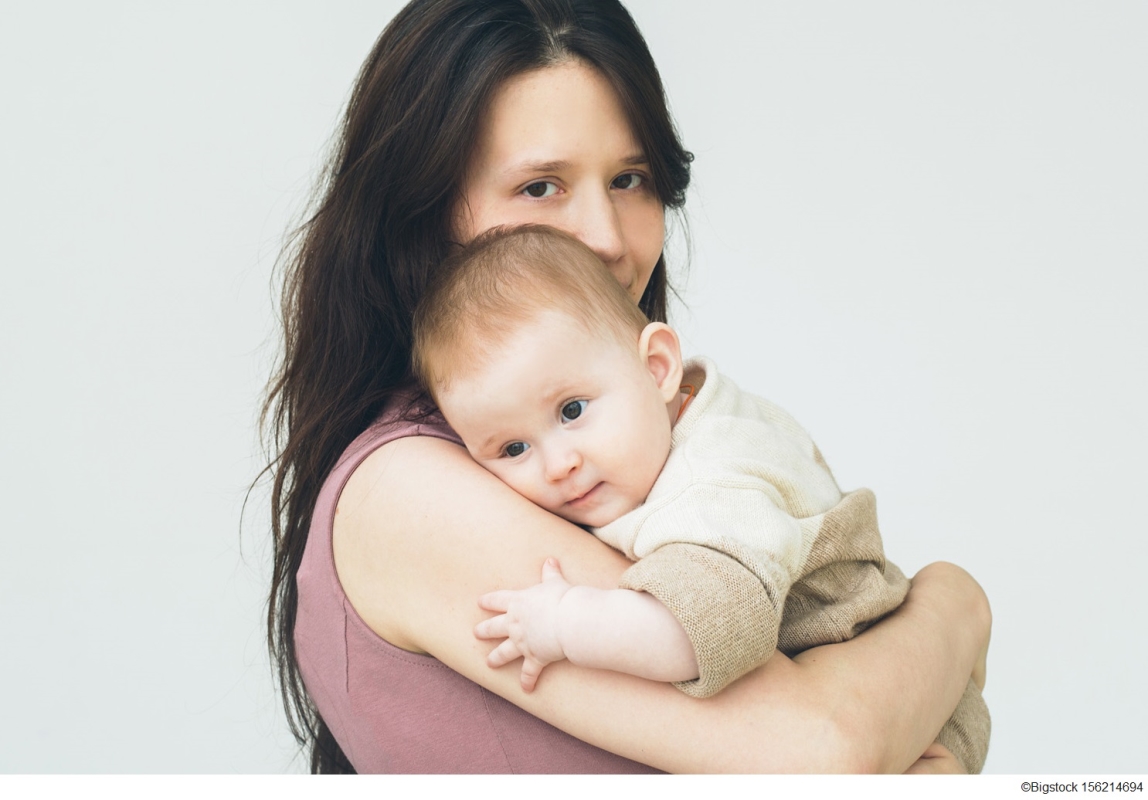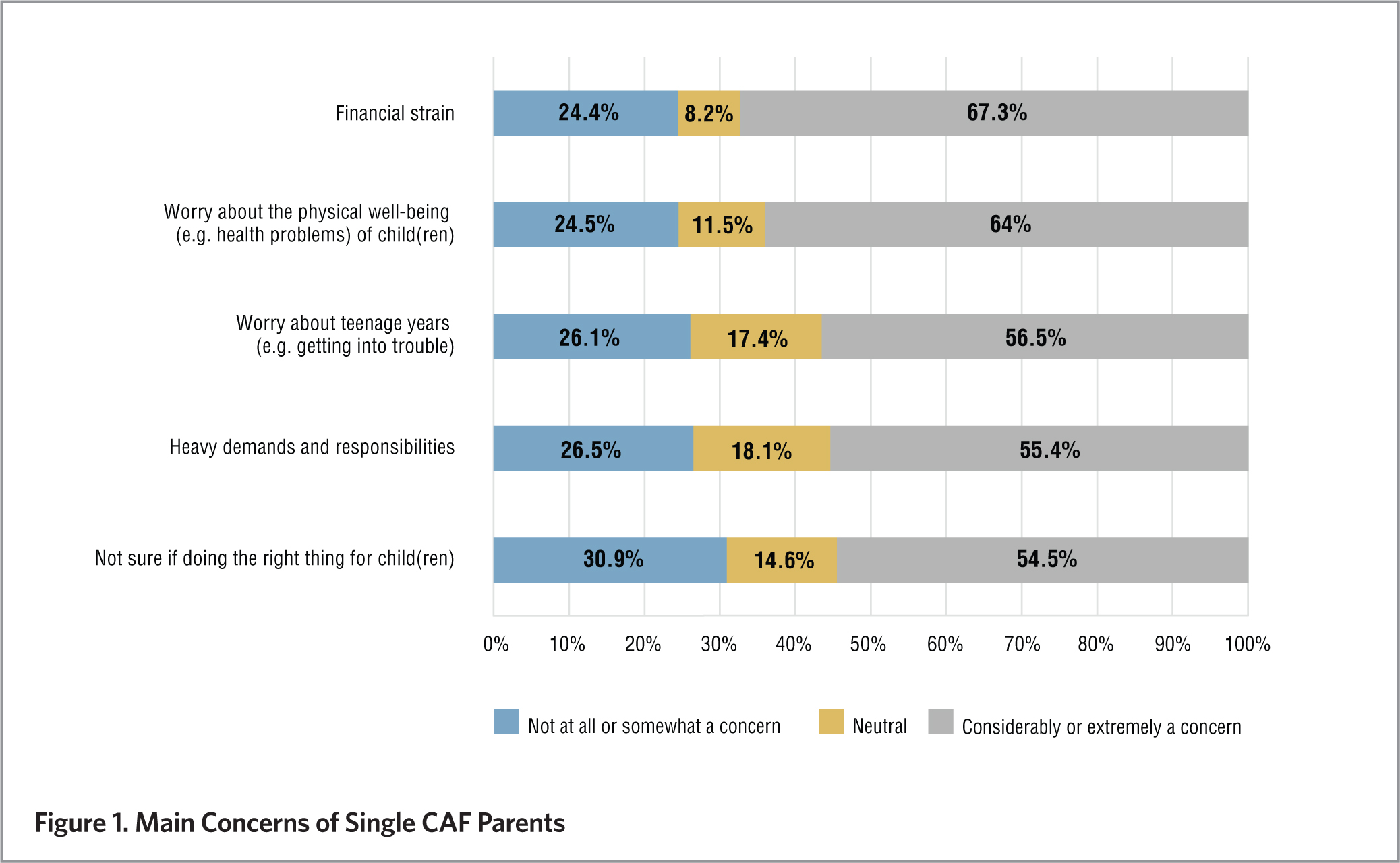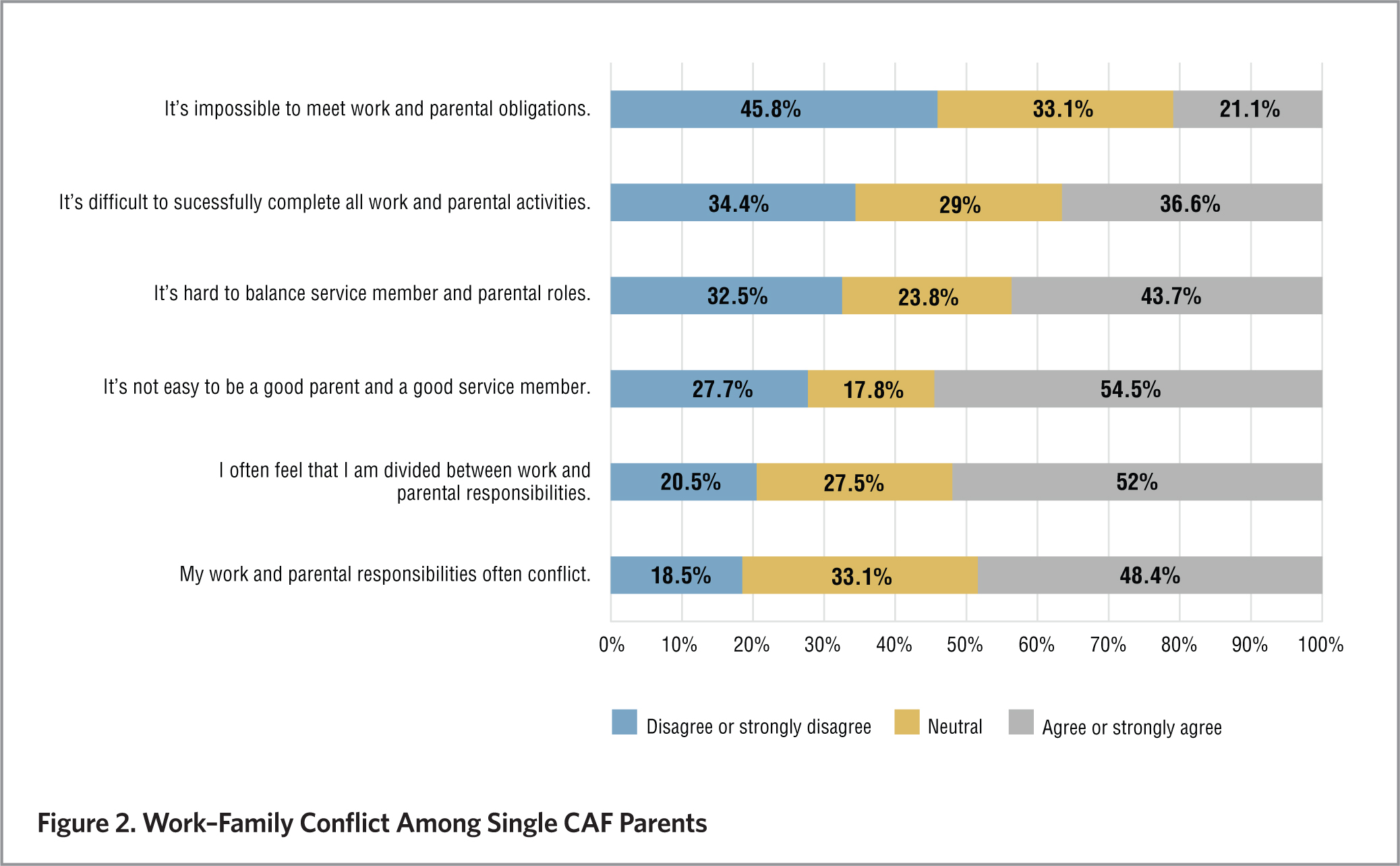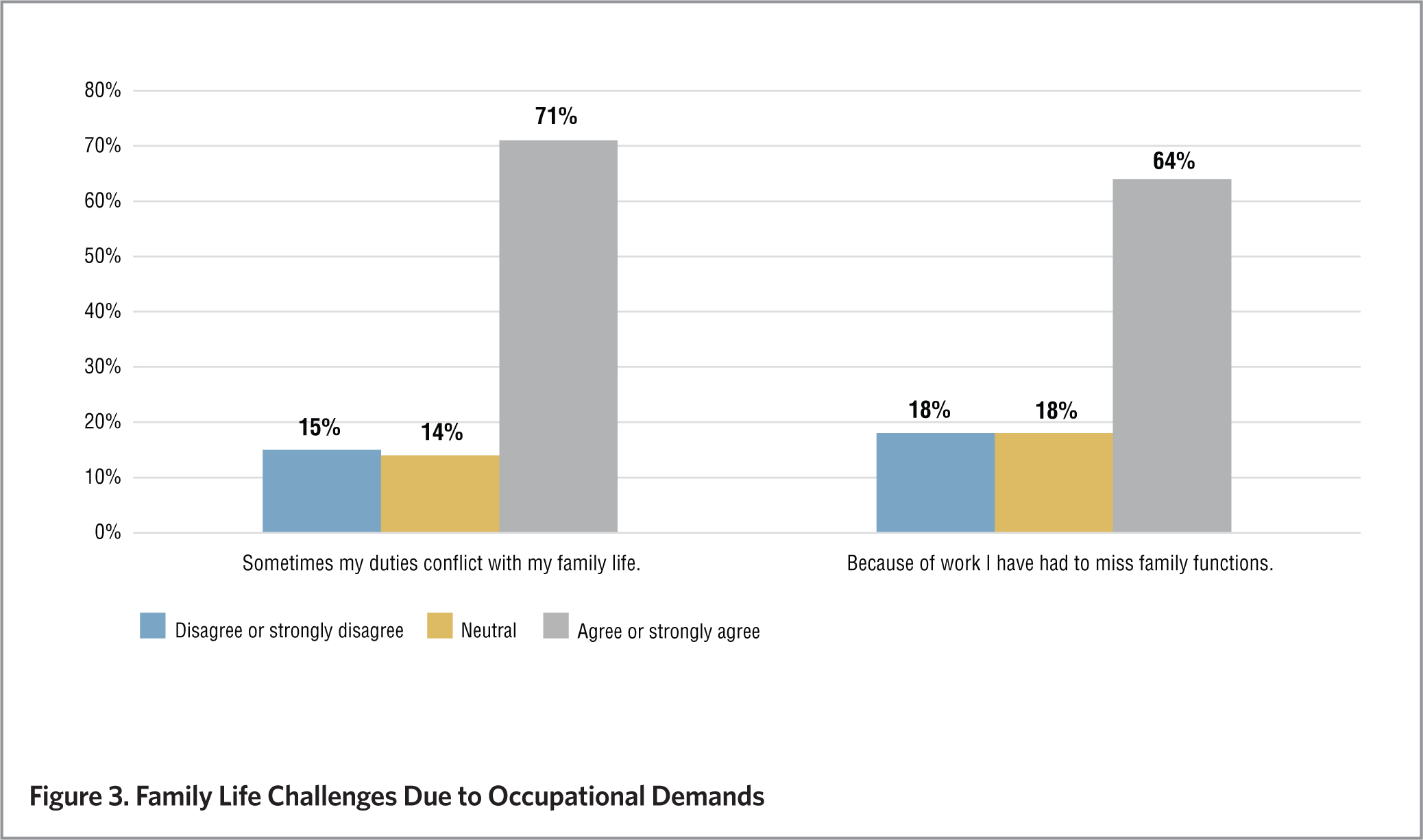Download this article in PDF format.
Heidi Cramm, Ph.D.
Military families in Canada are highly mobile, relocating three to four times more often than their civilian counterparts.1 This mobility has been found to complicate access to health care for these families, most of whom live off-base (85%, compared with only 20% in the mid-1990s) and rely on provincial and territorial civilian health care systems. This has an acute impact on the 8.2% of military families who have children with special needs, including those living with Autism Spectrum Disorder (ASD).2
Autism Spectrum Disorder (ASD) is a common neurodevelopmental disorder with an estimated prevalence of 1 in 68 children. While this condition primarily affects social communication, often making it difficult for people living with ASD to share enjoyment or emotional experiences with others, it has a range of symptoms and associated behaviours:
- Approximately 25% of people living with ASD are non-verbal, unable to use or respond to non-verbal communication (or are otherwise delayed in its use), such as pointing, gesturing and so forth, especially to indicate something of interest.
- People with ASD often have difficulties understanding abstract language/communication such as metaphors, sarcasm, colloquialisms and jokes.
- Repetitive behaviours, such as rocking, hand-flapping, finger movements and so forth, are common among people with ASD.
- People living with ASD are often highly sensitive to change, and they are “creatures of habit.”
- Most people with ASD have a range of sensory dysfunctions that vary widely (e.g., extreme sensitivities to noise, touch, smells, tastes, etc.) while many also exhibit a high pain threshold.
- Some children with ASD have exceptional abilities in music, visual and academic skills.
- In addition, up to 90% of children with ASD will have a co-existing medical and/or psycho-behavioural disorder, such as ADHD, anxiety, sleep disorders, feeding disorders, seizures, intellectual disability and gastro-intestinal disorders.
Early Intervention Supports Treatment for Children with ASD
Research suggests that early intervention is most impactful to the prognosis of ASD,3 and it can enhance the development of learning, communication and social skills for people living with the condition. Autism is typically diagnosed in early childhood, even as early as 18 to 24 months of age.
In many provinces, families experience long waiting times when seeking early diagnosis and/or intervention due to a “bottlenecking” of access to appropriate diagnostic centres – delays that can sometimes exceed two years.
Between 21% and 27% of military families do not have a family doctor, compared with 15% among the general population.4 Since many health services and treatments are accessed through family doctors, this discrepancy means that military families can have a harder time accessing services for children with special needs, including those with ASD. With each move, families who are moving toward the top of wait-lists for services find themselves back at the bottom.
Since many health services and treatments are accessed through family doctors, this discrepancy means that military families can have a harder time accessing services for children with special needs.
Exploring the Experiences of Military Families of Children with ASD
In a recent qualitative study, military families who have a child with ASD were interviewed to explore and describe their experiences navigating health care systems on behalf of their children.5
Many of these families reported that they had a hard time getting their child’s condition noticed, validated and medically diagnosed. Families generally found it difficult to get the assessment for ASD, and this delay in assessment and subsequent diagnosis meant that, for many, their access to intervention services was held up significantly.
One parent explained that their family experienced delays in accessing care for their son after moving because many of the programs available in their new community were for people living with autism who have a diagnosis. Since the family didn’t realize that they would need to have the diagnosis in hand when they sought care in their new neighbourhood, they went ahead and moved without having one, only to find that their son couldn’t access these programs as a result. Access to care for their child was delayed by months.
Difficulties accessing care can have an impact on family finances. Frustrated with wait-lists and the implications of delayed services for their child’s long-term development, many families opted instead to pay directly for private assessment services. One participant described making the decision to seek out private assessment and intervention because the wait-lists would exceed their posting tenure: “We paid privately… because the wait-list was too long. Once we had that diagnosis, [a community organization] put us on a wait-list for [Applied Behaviour Analysis] therapy. That wait-list is two years long. So we were never going to see the end of that wait-list either. So… we started paying privately for him.”
Frustrated with wait-lists and the implications of delayed services for their child’s long-term development, many families opted instead to pay directly for private assessment services.
At times, families waiting for care said they wound up moving again before their child’s name made it to the top of the local wait-list. For some families, service access was within sight, and then another posting forced them to move and start all over again. One participant shared that after waiting for some time for their child to get into a program, they finally received confirmation from their intervention team that the child would be able to start in September – which was of little help to them at that point, since they were going to be moving again in July.
With services varying widely from province to province (along with the corresponding eligibility and funding), some families reported consternation over losing services that they had previously had access to but were simply not available in their new location. One participant described this experience, “We realized the school [in the current province] didn’t offer the same things that they do in [the previous province]… there was nothing they could do…”
These variations also exist from region to region within the same province. For example, another participant described having to remove her child from a highly beneficial education program because they were moving, but then found they were unable to place him in a similar program in the new city because the program didn’t exist there (even though they were in the same province). Families in several other provinces described similar circumstances when moving interprovincially or intraprovincially.
Ongoing Pursuit of Health Care Affects Family Well-Being
While military families are highly resilient, difficulty accessing health care services for their children with ASD can have an impact on their own and their family’s well-being. Participants in the study commonly described frustration and confusion over the daunting tasks of sorting out how to get their children whatever services were possible. One participant described “bursting into tears” after finally getting to the top of a wait-list for intervention only to find the service did not meet expectations.
Some participants described having to draw on support from extended family to help care for their children. One participant said her parents retired and moved to the family’s current posting to assist because “they knew [our son] needed more help and we needed a break.” Others lamented the fact that extended family were too far away to really provide any assistance and were “just not able to be there.” Participants’ experiences with Military Family Resource Centres (MFRCs) were diverse, as the available services varied from base to base.
Parents often experienced strain on their relationships with their spouse or partner as their efforts to find caregiver supports and develop local networks can be complicated by training exercises, deployments and postings. As a result, hard choices are sometimes made related to whether or not a new posting, which comes with career opportunity, is feasible given the health care implications for the child with ASD.
Parents often experienced strain on their relationships with their spouse or partner as their efforts to find caregiver supports and develop local networks can be complicated by training exercises, deployments and postings.
Some participants described the Canadian Armed Forces (CAF) member making career decisions such as changing trades or requesting a specific posting for the benefit of the child, even though it could have an impact on their career trajectory and, by extension, the family as a whole. One participant said their family would consider living apart (i.e., imposed restriction) if it meant the child would receive the services needed, even though this would create a protracted separation that could have a significantly negative impact on the family as a whole.
In some military families, a civilian spouse may need to limit their involvement in the paid labour force to offset the caregiving requirements of the child. Such “trade-offs” are common in military families, with more than half (51%) of surveyed CAF spouses reporting that they have made some career sacrifices because of their partner’s military service, according to a 2009 study from the Director General Military Personnel Research and Analysis (DGMPRA). This limited workforce involvement can further constrain family finances that may be needed to pay for private services for their children. This can have a greater impact on dual-service families (families with two serving CAF members).
Military Families Express Desire for Navigation Support
Some military family members identified a few ways that could be considered to enhance the support for other military families who have children with ASD. Many expressed the desire to connect with other military families who are already at the new location to help map out options for how to access ASD-related services; some wanted this to be a formalized opportunity whereas others felt it would be important that it happen outside of official channels.
Many [families] expressed the desire to connect with other military families who are already at the new location to help map out options for how to access ASD-related services.
Opportunities to provide augmented and current information for families were also discussed, with some expressing a desire for a single point person who can help them navigate across school, community and health services. However, one participant indicated this type of formalized approach could result in parents receiving “filtered information” without any indication of how effective the services really are.
This qualitative study raised some important issues, but there is much left to learn. How might some of these opportunities be realized within existing formal and informal networks for incoming families? How could the disruptions and delays to health care access that military families report be reduced across provinces? What, if any, kinds of options might there be to offset the financial implications for parents when publicly funded services are absent or inaccessible? Are the differences for those who move within provinces similar to those who move across provinces? Exploring these questions through further research – with the insights and participation of families – will be key in supporting Canada’s diverse military families.
Dr. Heidi Cramm is the Interim Co-Scientific Director at the Canadian Institute for Military and Veteran Health Research (CIMVHR) and recipient of the 2016 Colonel Russell Mann Military Family Health Research Award.
Notes
- Heidi Cramm et al., “Making Military Families in Canada A Research Priority,” Journal of Military, Veteran and Family Health 1:2 (November 2015). Link: http://bit.ly/2zx46G1.
- Learn more with A Snapshot of Military and Veteran Families in Canada. Link: https://bit.ly/2fM3xmP.
- Geraldine Dawson, “Early Behavioral Intervention, Brain Plasticity, and the Prevention of Autism Spectrum Disorder,” Development and Psychopathology 20:03 (July 7, 2008). Link: https://bit.ly/2SWK2Lj.
- Nathan Battams, “A Snapshot of Military and Veteran Families in Canada,” Statistical Snapshots (November 2016). Link: https://bit.ly/2fM3xmP.
- Most of the families who participated in the study were married, and one-third of them had both parents serving in the Canadian Armed Forces (CAF). Most of the families represented serving members in the Regular Forces, primarily in the Army.

























